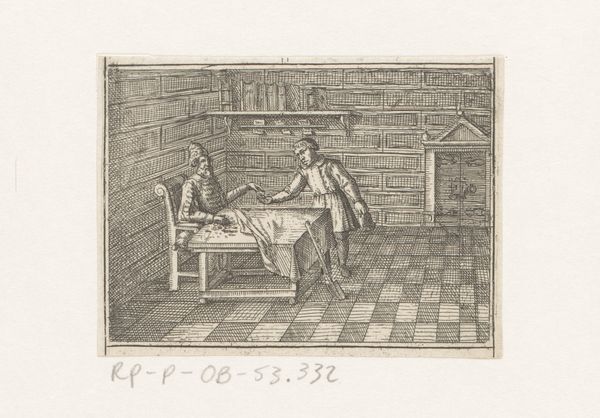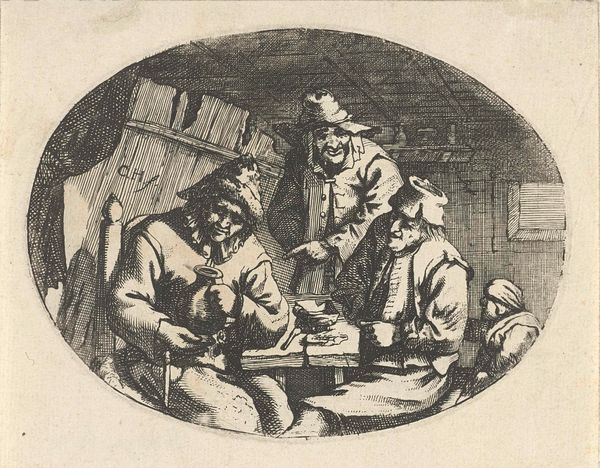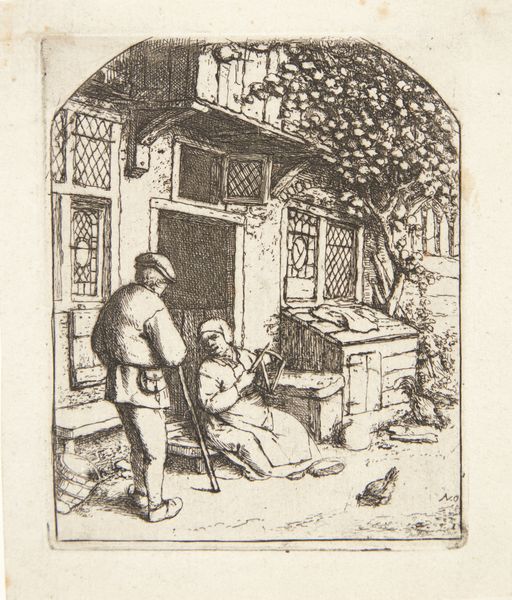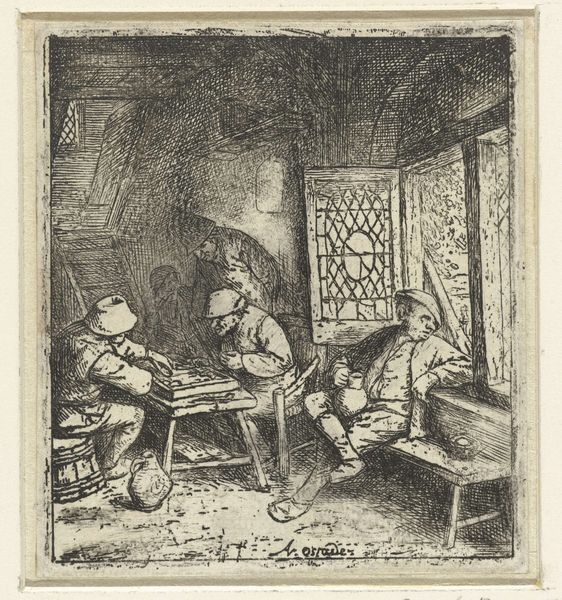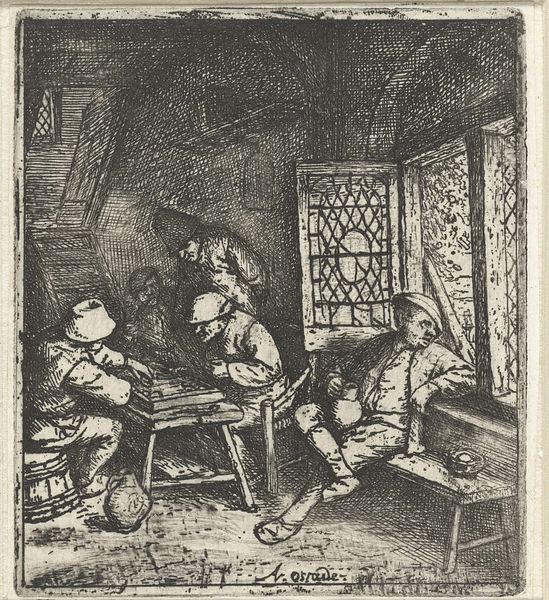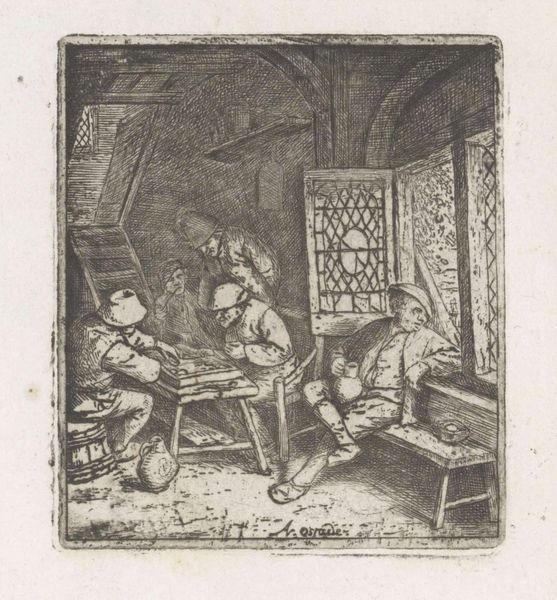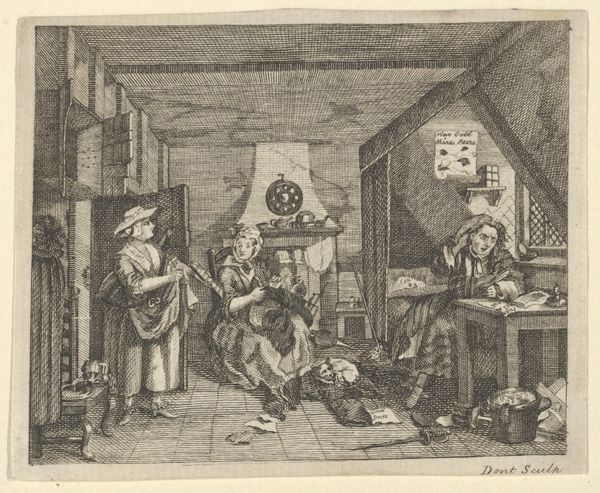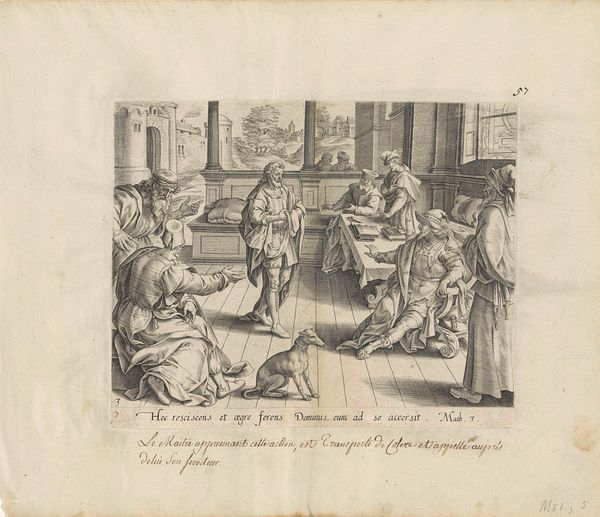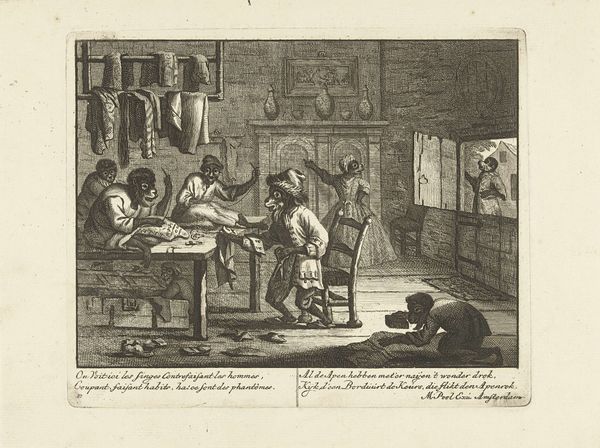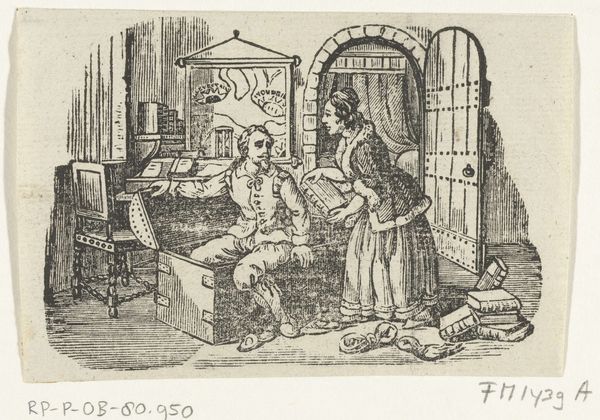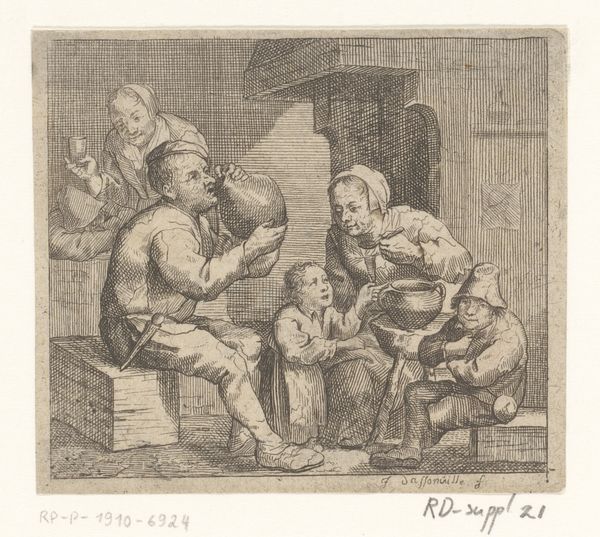
Dimensions: height 75 mm, width 88 mm
Copyright: Rijks Museum: Open Domain
Abraham Allard created this etching of backgammon players in the early 18th century, using a technique that involves acid to bite lines into a metal plate. Note how the etched lines are densely packed to create shading and texture. This is particularly evident in the interior of the rural scene, depicting the roof and window frames. Etching allowed Allard to capture fine details, from the figures' clothing to the paraphernalia of their leisure – the ceramic jug, the smoking pipe. It's fascinating how a traditionally "low" subject like this one could be so meticulously rendered through a relatively recent printmaking technology. Backgammon, or "tric-trac" as it was known, was a popular pastime, and Allard highlights its social dimension. Yet the image also suggests idleness, and perhaps a little squalor. Allard isn't just showing us a scene; he's commenting on a social reality. This print straddles the line between documentation and critique, elevating a slice of everyday life into the realm of art.
Comments
No comments
Be the first to comment and join the conversation on the ultimate creative platform.

